Lesbian porn: A brief and sexy history
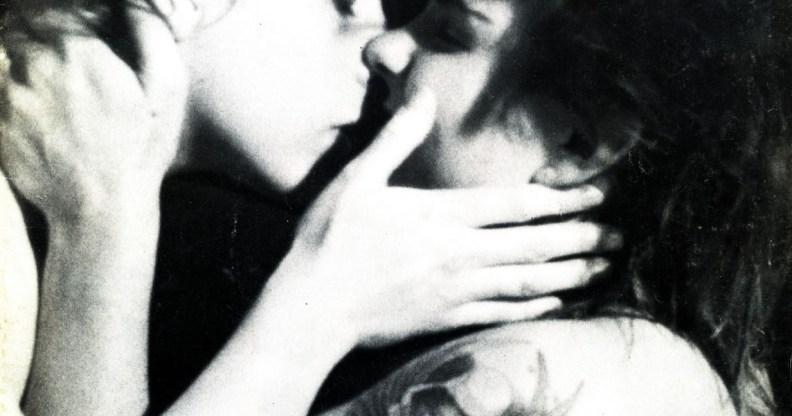
For many feminist historians, lesbian porn did not begin until the 1980s, when lesbian erotica actually started being produced by queer women instead of by men.
It was during this time that pro-sex queer women reacted to the anti-porn dialogue at the time.
These women were fed up with mainstream porn that was primarily designed for straight white men and began rejecting anti-porn politics.
Realted: How do lesbians have sex
These queer radicals set out to rid women of their shame for watching porn and make their mark on the porn industry.
By setting up erotic magazines like On Our Backs and video porn production companies such as Fatale Video, these individuals produced their own authentic lesbian porn – made by and for queer women.
Although lesbian erotica dates back to the Greco-Roman world, it is important to state that these images were predominantly made by men.
So, what’s the history of lesbian porn?
How has it grown in popularity? And what are the issues faced by historians documenting porn made for queer women?
The beginnings: On Our Backs and the mid-1980s
Lesbian erotica dates all the way back to the Classical World – from the depiction of a woman manually stimulating another woman on a sixth-century BC vase from Ancient Greece to the erotic frescoes of Pompeii – but this work was largely produced by male artists.
Lesbian and bisexual women were also a notable theme in male-dominated 19th century art, as lesbianism became more widely discussed, including in paintings by François Boucher and J. M. W. Turner in the western world, as well as in works by artists in Asia like Hokusai.
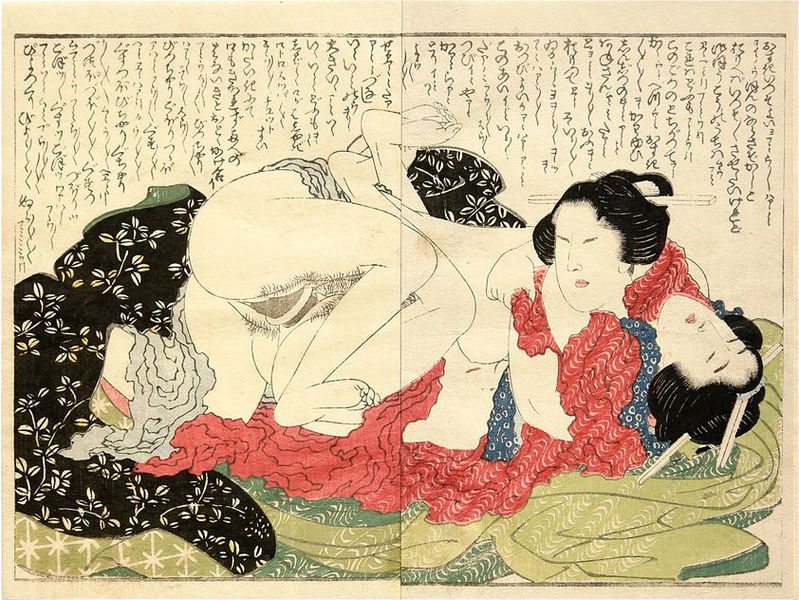
Hokusai’s ‘Shunga Lesbians’ c.1814 (Wikimedia Commons)
As Amalia Ziv, who is a senior lecturer for the Gender Studies Program at Ben-Gurion University of the Negev in Isreal, says: “For me lesbian porn is porn produced by lesbians for lesbians – it’s not just porn with lesbian content and lesbian themes.
“So that would make it a very short history, I would start it in the mid 1980s with lesbian sex magazines and lesbian video porn.”
Ziv, whose book Explicit Utopias: Rewriting the Sexual in Women’s Pornography was published in 2015, highlights the groundbreaking lesbian erotica magazine On Our Backs, which was set up in 1984 by Debi Sundahl and Myrna Elana, running until 2006.
The name of the publication was a satirical reference to the feminist newspaper Off Our Backs, which regularly published the work of anti-porn feminists in the 1980s.
The first editor for the magazine, which used the tagline “entertainment for the adventurous lesbian,” was queer feminist Susie Bright, who edited the magazine between 1984 and 1991.
Regular contributors included eminent lesbian voices Nan Kinney, Honey Lee Cottrell, Tee Corinne, Jewelle Gomez, and Joan Nestle.
The magazine featured raunchy photoshoots, erotic fiction and sex advice columns, including one by editor Susie Bright, published under the pseudonym Susie Sexpert.
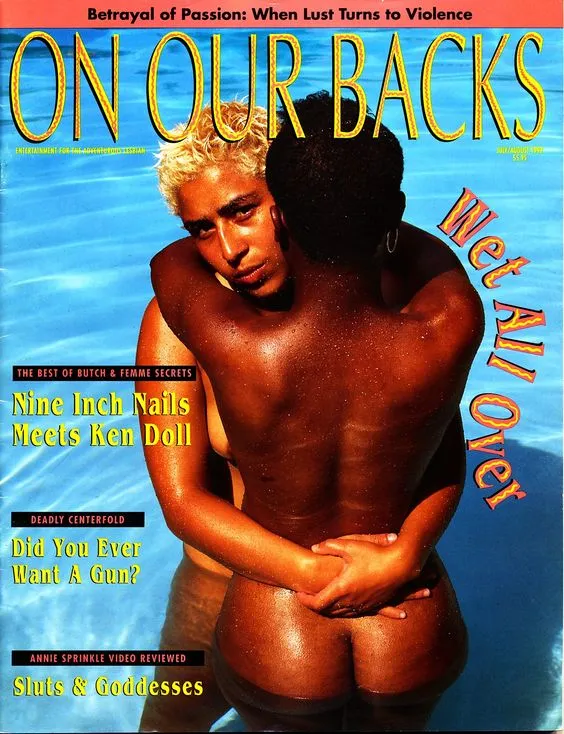
On Our Backs, July/August 1992 (Pinterest)
According to Ziv, this lesbian porn was a “reaction” to the so-called “feminist sex wars” of the 1980s – the heated debates between anti-porn and sex-positive feminists.
“The context of lesbian porn in the 80s was a rejection of the anti-porn politics, but also as a rejection of mainstream porn,” explains Ziv.
As well as On Our Backs, other lesbian porn magazines included Bad Attitude, which was published in Boston from 1984, and, in the UK, a pro-sex magazine for queer women called Quim ran from 1989-1995.
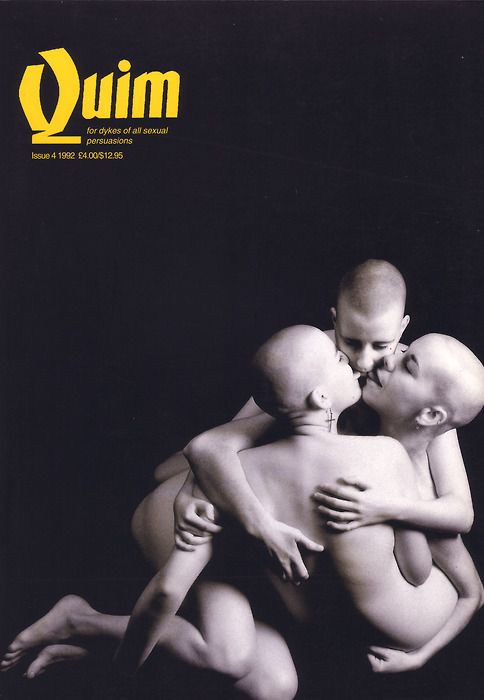
Quim, issue 4, 1992 (Pinterest)
Development: Fatale Video and other queer production companies
With On Our Backs gaining momentum among lesbian circles worldwide, contributors Debi Sundahl and Nan Kinney released the first of a series of lesbian porn videos by Fatale Video – the first lesbian video porn company – in 1985.
“It’s the same clique, it’s the same people behind both [On Our Backs] and the production company,” says Ziv.
More lesbian porn production companies soon formed, like SIR (Sex, Indulgence and Rock N’ Roll) Productions, which was described as “100 percent dyke produced” and created by butch-femme couple Shar Rednour and Jackie Strano in the 1990s.
Videos by these lesbian production companies – like “Bend Over Boyfriend” by Fatale Video and “Sugar High Glitter City” by SIR Productions – featured orgasmic sex scenes.
Performers regularly used sex toys like dildos, too.
As Ziv notes, this pornography had an educational purpose, both in showing how women could actually enjoy sex – rather than being submissive and passive objects of male desire – and in promoting safe sex.
“When these representations came out, many women thought they couldn’t identify with the orgasms [depicted], it was completely unfamiliar…
“[There are] sex education elements, both in terms of safer sex practices in the 80s and early 90s, and also in terms of female ejaculation and sex practices that were less familiar.”
Lesbian porn from the 2000s to the present day
Since the start of the millennium, lesbian porn has grown in popularity.
Valerie Webber, a doctoral student studying Public Health, Gender and Sexuality, and Pornography at Memorial University of Newfoundland in Canada, says: “There was a real surge of queer porn in the mid-2000s.”
Webber, whose paper “Shades of gay: Performance of girl-on-girl pornography and mobile authenticities” was published in 2013, points to queer porn makers like Shine Louise Houston, describing her 2006 film The Crash Pad (and the subsequent series by the same name), produced by Pink & White Productions as “a seminal piece of that movement,” alongside body positive Courtney Trouble’s company Reel Queer Productions.
Webber continues: “So many rad queer pornographers and performers could be listed, like Jiz Lee, Buck Angel, Lorelei Lee, [and] Billy Castro.”
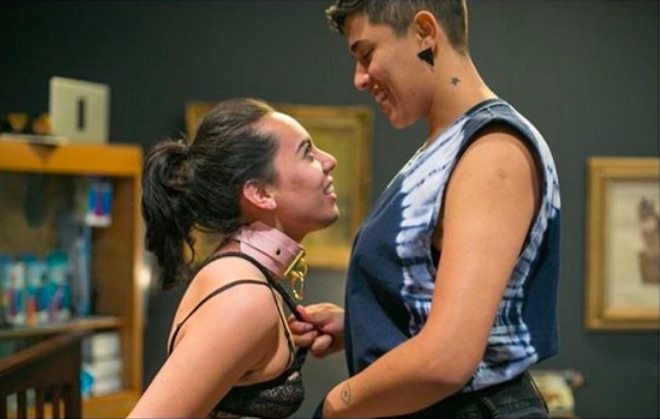
CrashPad Series (CrashPad Series/Instagram)
Webber adds that during this time “a ton of independent, amateur, and radical porn was able to reach a wider audience thanks to the Internet and more democratized production and dissemination platforms.”
More recently, directors like Bree Mills and her studio Girlsway, have been praised for creating authentic lesbian porn.
Other good queer porn channels right now include Houston’s CrashPadSeries, which she founded after the success of her film of the same name, as well as her studio PinkLabel TV, Courtney Trouble’s Queer Porn TV and Ciné Sinclaire.
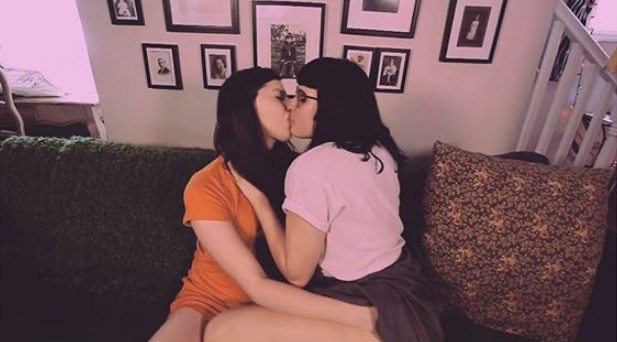
Queer Porn TV (Queer Porn TV/Instagram)
The Difficulties faced when documenting lesbian porn
Documenting the history of porn specifically aimed at lesbian and bisexual women has proved problematic, often because the bulk of so-called “lesbian porn” has instead targeted a heterosexual male audience.
Feminist porn film-maker Erika Lust, whose studio XConfessions.com produces realistic queer porn with lesbian and bisexual performers, says: “The main issue is that for too many years heterosexual men have been the ones documenting lesbian sex.”
She adds: “The fetishisation of lesbian women has been and keeps being exploited in heterosexual porn for the male gaze.”
Lust explains that in order to make her videos authentic she works with “women who normally sleep with other women in their private lives.
“They enjoy having sex with them, I just let them do what they feel they want to do.”
She says: “Instead of just catering for male desire, [lesbian porn] should show an authentic representation of lesbian sex and real pleasure.”
For Webber, porn produced for straight men also assumes that women don’t have sexual desire.
“A key feature of patriarchy has been perpetuating the myth that women are asexual or sexually delicate, and uninterested or undeserving of consuming sexual media,” she says.
“So one of the difficulties of documenting lesbian porn is that women have rarely been seen as a valid porn audience.”
Webber argues that the LGBT+ community and other marginalised groups should be supported in making their own porn.
She concludes: “I want to see more queers, femmes, people of colour, non-binary folks, differently abled folks, and other traditionally marginalized people – people whose sexualities have often been defined for them and used against them – given the means to create the kind of sex films that they want to make and see.”

